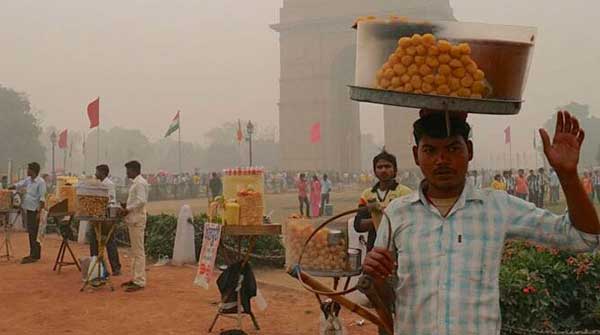Global Affairs minister was in New Delhi this week for another session in the decade-long Canada-India Strategic Dialogue
 Devising a strategy for closer engagement with India is a beguiling task that has been assigned to many Canadian diplomats over the years. When I was Director-General for Asia at Canada’s Department of Foreign Affairs and International Trade, between 2006 and 2008, skepticism among global affairs colleagues was palpable.
Devising a strategy for closer engagement with India is a beguiling task that has been assigned to many Canadian diplomats over the years. When I was Director-General for Asia at Canada’s Department of Foreign Affairs and International Trade, between 2006 and 2008, skepticism among global affairs colleagues was palpable.
The problem is that India poses a double conundrum: how to expand trade ties with a country that does not fully adhere to international trade rules; and how to bring a non-aligned democracy into closer alignment with western security interests in Asia.
The success of any Indo-Pacific Strategy turns on squaring these circles. Canadian Global Affairs Minister Melanie Joly visited New Delhi this week to start implementing Canada’s strategy published last November. She met with her counterpart, India’s Minister of External Affairs, Subrahmanyam Jaishankar, for another session in the decade-long Canada-India Strategic Dialogue.
 |
| Related Stories |
| The Trudeau Indian train wreck
|
| Modern India turns 75 despite the bitterness and violence
|
| India undermining America’s ban on Russian oil
|
As a trading nation rather than a geopolitical player, Canada’s main interest is in India’s economic opportunities. Though it has been a member of the GATT (General Agreement on Tariffs and Trade) since 1948 and the WTO (World Trade Organization) since 1995, India is often non-compliant with WTO trade rules. Disputes over agriculture, investment protection, rules of origin and dispute settlement have been regular impediments to greater participation in international trade. Far from esoteric, these are counterproductive policy obstacles to Canadian business. As a result, trade with Canada is not anywhere near its potential.
Reputation also matters. It didn’t help that Joly’s visit coincided with a business scandal around the giant Adani conglomerate, whose head is close to PM Modi. A powerhouse in everything from commodities trading and construction to energy, ports and airports, manufacturing and media, the group has been accused of over-leveraged borrowing based on inflated share valuations. Protests by political opponents and furious investors have spilled into India’s streets.
Of course, western Indo-Pacific strategies are largely about security. The whole point is to draw the world’s largest democracy into closer alignment as a geopolitical counter-weight to China. But this is where things get even more complicated.
India has been a leader of non-aligned countries. It pursues an interests-based foreign policy that is agnostic about geopolitical camps. That’s why it has not participated in western sanctions against Russia over the Ukraine invasion. In fact, it continues to import Russian oil at an attractive discount against global prices. In this, even the world’s superpower is forced to turn a blind eye in the interests of achieving the more important strategic aim of keeping India onside. According to Bloomberg, the U.S. is buying around 89,000 barrels of gasoline and diesel daily from India. India is also dependent on the Russian arms industry to a surprising degree.
Canada’s bilateral baggage on the security front includes sales of CANDU reactors to India in the 1960s under safeguards agreements meant to prevent the country from weaponizing the technology. Relations soured when India tested a nuclear device in 1974 using plutonium produced in a Canadian-supplied reactor.
To the extent that India has engaged with Canada on security matters since then, it has mainly been to express concern over Canada’s perceived failure to crack down on members of the pro-Khalistan movement seeking an independent Sikh homeland in the Punjab region of India. The Khalistan movement was linked to the assassination of Indian PM Indira Gandhi in October 1984 and the Air India bombing in June 1985.
So how do we productively engage India? On the economic front, India needs growth. It is set to become the world’s most populous country this year, with positive demographics and a growing consumer class. Showing signs of perhaps wanting trade deals, it is negotiating agreements with the U.S., the E.U., the U.K. and Australia.
Negotiations with Canada on an Early Progress Trade Agreement (EPTA) are also expected to conclude this year. Though the agriculture sector, rife with protections and subsidies, remains a main impediment, this could pave the way for a Comprehensive Economic Partnership Agreement (CEPA), which has been under discussion since 2009. With India hosting the G20 this year, a visit by PM Trudeau offers a chance to highlight the positives. Opportunities abound in mining, energy, agriculture, infrastructure, technology, education and investment. Currently 13th among Canada’s trading partners, there is certainly room for significant growth.
India also needs to ensure its own security. Border clashes with China in Kashmir have been going on for decades. India’s participation in the ‘Quad dialogue’ with the U.S., Japan and Australia indicates that it already understands that its interests in countering China’s dominance have shifted towards closer cooperation with these partners.
So, there may indeed be hope for resolving these conundrums. But both will rest first and foremost on India pursuing its own interests.
Randolph Mank is a former Canadian diplomat and business executive. He currently heads MankGlobal consulting, serves on boards, and is a Fellow of the Canadian Global Affairs Institute and the Balsillie School of International Affairs.
For interview requests, click here.
The opinions expressed by our columnists and contributors are theirs alone and do not inherently or expressly reflect the views of our publication.
© Troy Media
Troy Media is an editorial content provider to media outlets and its own hosted community news outlets across Canada.

